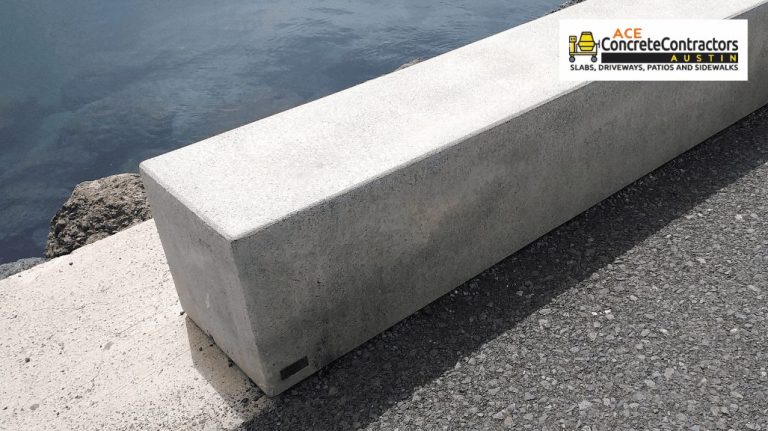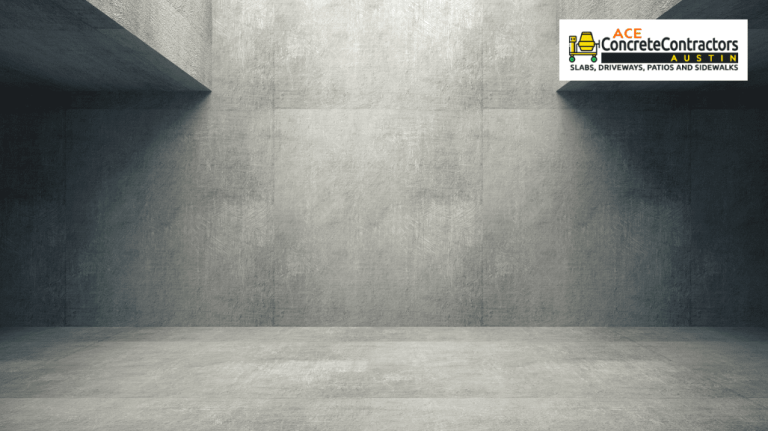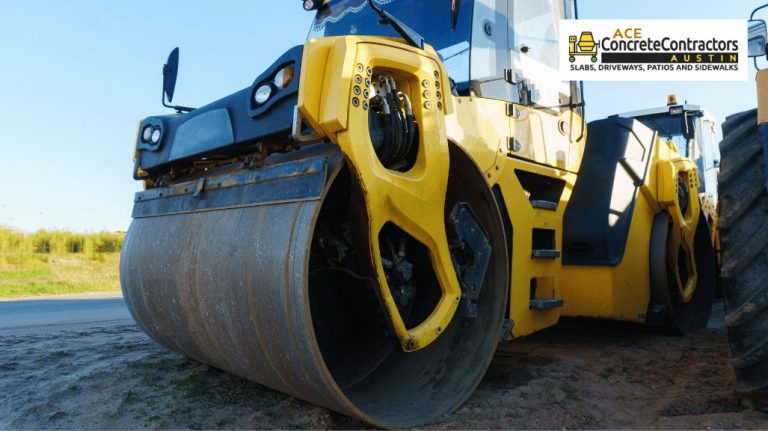Table of Contents
Concrete is one of the most versatile building materials in the construction industry. Its ability to last a long time, robust nature, and flexibility have made it a popular pick for many different projects. You can use it to build steel structures and even floors in factories.
Whether it’s normal-strength concrete for everyday jobs or special concrete for specific building styles, each kind has its use because of what makes it different.
Explore the diverse world of concrete in construction! https://t.co/Pce3CvFyep Learn about its various types and applications in our new blog. #concrete #construction #austintx pic.twitter.com/hB3ISbqej8
— Ace Concrete Contractors Austin (@aceconcreteatx) March 6, 2024
What Is a Standard Concrete Mix Ratio?
A concrete mix ratio is a predetermined combination of ingredients used to make the building material. This measurement is crucial to ensure the concrete has the desired strength and durability. The mix ratio includes three main components:
- Cement: This is often Portland cement, a powdery substance that binds the concrete mix together. The amount of cement in the mix is typically measured in bags (e.g., one bag, two bags, etc.).
- Sand: Fine aggregates, like sand, fill the spaces between the larger aggregates (gravel or crushed stone). The amount of sand is usually measured in cubic feet or cubic meters.
- Aggregate: Coarse aggregates, like gravel or crushed stone, are the bulk of the concrete’s volume. The amount of aggregate is also measured in cubic feet or cubic meters.
Now, for a standard concrete mixture ratio that is commonly used for various construction projects, you’ll often use a mix ratio of 1:2:4. Here’s what this ratio means in practical terms:
One part of Portland cement
Two parts of sand
Four parts of fine and coarse aggregates
Builders mix these elements with appropriate water to create a workable concrete mixture. This standard mix ratio balances strength and “slump” well. It is suitable for various construction applications, from building foundations to sidewalks.
You should know that specific projects may need variations in the mix ratio to meet their unique requirements.
The 21 Different Types of Concrete in the Construction Industry
Countless types of concrete are available in the market. Each has unique properties and uses. This section will explore the different variations used in construction. The list includes the most commonly used concrete to the specialized types for complex industrial projects.
Reinforced Concrete
Fiber-reinforced concrete is a vital construction material known for its strength and durability. Its usage spans various applications, from everyday buildings to critical infrastructure. This makes it a cornerstone of modern construction.
Reinforced concrete structures have a long service life when properly designed and maintained. They resist corrosion and weathering, which is crucial for longevity. It also has excellent fire-resistant properties. This makes it a preferred choice for building elements where irregularity is a concern.
While normal concrete is strong in compression, it lacks strength. Builders add reinforcing steel bars (rebar) or mesh to provide tensile strength, addressing this limitation.
Most bridges and skyscrapers around the world use reinforced concrete for their construction. Its durability and load-bearing capacity make it an ideal choice for spanning rivers and highways.
Precast Concrete
Precast concrete elements are ideal for walls, columns, and beams. They provide structural stability and can also serve as architectural finishes. This type of concrete is resistant to environmental factors such as weathering, corrosion, and fire.
You can also customize its shape, size, and finish. This flexibility makes precast concrete suitable for various architectural and structural applications.
While initial production costs may be higher than traditional cast-in-place concrete, the efficiency of precast concrete often leads to affordability during construction.
Precast concrete also incorporates recycled materials, reducing environmental impact. Its durability means less maintenance and replacement over time.
Ready-mix Concrete
RMC is a convenient and efficient construction material known for its consistency, quality, and versatility. You can use ready-mix concrete for building foundations and walls in residential and industrial construction.
Manufacturers prepare this type of concrete at a central batching plant and deliver it to the site in a ready-to-use state. Ready-mix concrete saves time and labor compared to on-site mixing.
Lightweight Concrete
As the name suggests, one of the primary properties of LWC is its lower density compared to traditional concrete. It uses fine aggregates, such as expanded clay, shale, or perlite. Lightweight concrete offers excellent thermal insulation properties.
This makes it suitable for heat or cold insulation applications in walls and roofs. Despite its lower density, LWC can maintain its strength-to-weight ratio.
Lightweight concrete is popular in ICF construction. Builders pour it between polystyrene or other insulating forms. This results in energy-efficient structures with impressive insulation properties.
The versatility of lightweight concrete makes it a valuable asset in construction. It is also helpful for specialized applications like sound barriers and slope stabilization.
Asphalt Concrete
Asphalt concrete is ideal for road and highway construction due to its smooth surface and quick construction time. It provides excellent traction for vehicles.
At high temperatures, asphalt concrete becomes a viscous liquid. You can mix and apply it fast during construction. The material solidifies at lower temperatures. This offers stability and durability in various weather conditions, including cold winters.

Prestressed Concrete
Prestressed concrete undergoes compression forces before builders use it on external loads. The pre-compression increases its load-bearing capacity and resistance to tensile forces.
This high-density concrete is resistant to cracking and is especially beneficial in structures like bridges and high-rise buildings that experience significant movement.
Unlike conventional concrete, prestressed concrete blocks offer excellent durability. They resist environmental factors like weathering and corrosion.
Pervious Concrete
Pervious concrete is porous, with interconnected voids that allow water to pass through. These voids comprise 15-25% of the concrete’s volume.
While not as strong as traditional or reinforced cement concrete, permeable concrete can still support vehicular traffic and pedestrian loads. Homeowners may choose pervious concrete for their driveways to improve drainage and reduce erosion.
Stamped Concrete
While it’s more common outdoors, you can use stamped concrete for interior flooring in homes, especially in areas like basements. The material is versatile, offering various patterns, textures, and colors. This makes it a popular choice for decorative applications.
Stamped concrete needs minimal maintenance. You can reseal it to preserve its appearance and durability. Homeowners often opt for stamped concrete driveways to enhance curb appeal. It can mimic the look of cobblestone, brick, or other materials.
Polymer Concrete
Polymer concrete is a valuable choice when normal-strength concrete may not provide the appropriate level of resistance to environmental factors and abrasion. It has a fast curing time, allowing quicker construction and reduced downtime.
Also, polymer cement concrete is often lighter than plain concrete. This can be helpful when weight reduction is a concern.
You can use polymer-impregnated concrete for manholes, pipes, and other infrastructure components in wastewater treatment plants. This is due to its resistance to corrosion from sewage and chemicals.
Glass Concrete
When properly maintained, glass concrete shows durability and resistance to weathering. Such properties make it suitable for indoor and outdoor applications.
Recycled glass concrete can offer thermal insulation, depending on the thickness and composition. It’s suitable for energy-efficient building designs.
Artists and designers often use recycled glass concrete for sculptures and art installations. They do it to take advantage of its unique visual properties.

Air-entrained Concrete
Air-entrained concrete contains tiny air bubbles throughout the mixture. These pores range from a few micrometers to a few millimeters.
One of the primary benefits of air-entrained concrete is its resistance to freeze-thaw cycles. The bubbles act as pressure relief valves.
They allow water to expand into the voids during freezing. This prevents internal pressure buildup and cracking. Among the many types of concrete, this type of high-performance concrete is ideal for seawalls and docks.
High-density Concrete
Due to its high density, this type of concrete provides effective sound insulation. A heavier concentration sets high-density concrete apart from regular concrete. Manufacturers achieve this by using large aggregates, such as magnetite, hematite, or barite.
High-density concrete is often used for its exceptional radiation shielding properties, making it useful in atomic power plants, medical facilities, and radiology rooms.
Vacuum Concrete
Next, we have vacuum concrete. This material often sets and gains strength faster than other types of concrete. It reduces construction time. You can use vacuum concrete in parking lots, commercial floors, etc. Its applications range from underground tunnels to marine structures and high-rise buildings.
Self-consolidating Concrete
Abbreviated as SCC and also known as self-compacting concrete, this material has exceptional flowability. It is sometimes called “self-leveling” concrete because it can spread and settle under its weight.
SCC maintains the same durability characteristics as normal-strength concrete, including resistance to weathering, chemical attacks, and compressive strength.
Self-consolidating concrete is gaining popularity in residential construction for foundations, slabs, and decorative work.
Lime Concrete
Most people know lime concrete as lime mortar. This is a building material that contractors have been using for centuries. You can make lime concrete blocks by mixing calcium hydroxide, water, and aggregates such as sand or crushed stone.
Lime mortar can self-heal. Over time, it can reabsorb carbon dioxide from the atmosphere and harden, sealing fine cracks that may have formed. This concrete type is more sustainable than ordinary concrete in modern construction.

Normal-strength Concrete
Often called just “concrete,” normal-strength concrete is the most famous building material. It combines cement, water, fine and coarse aggregates, and sometimes admixtures.
This conventional concrete is versatile. You can use it for various structural and non-structural purposes in residential and commercial construction. Unlike other types of concrete, ordinary concrete is cost-effective and available. This makes it the go-to choice for many projects.
Plain Concrete
Further down the list, we have plain concrete. The mix design for plain concrete comprises water, cement, and aggregates. Unlike other concrete types, you don’t add admixtures to this material. As a result, it serves as the foundation upon which you can build more specialized types of concrete.
Its balanced strength, workability, and cost-effectiveness make this concrete type the material for various applications.
High-performance Concrete (HPC)
Usually abbreviated as HPC, high-performance concrete is a specialized type of material. This high-strength concrete is famous for its exceptional properties and performance compared to ready-mix concrete.
It is engineered to meet specific project requirements, offering enhanced strength, durability, and other desirable characteristics.
HPC has higher compressive strengths than reinforced concrete, often exceeding 10,000 pounds per square inch (psi) or 69 megapascals (MPa).
Also, HPC maintains good workability despite its high compressive strength, facilitating its placement and finishing during construction.
Pumped Concrete
The technology behind pumped concrete lets you apply the material in areas that are challenging to access or where traditional concrete types would be impractical. Also, this intelligent concrete pumping system can deliver the mix design over longer distances and to higher elevations.
Hence, it makes pumped concrete suitable for high-rise construction and large-scale projects. You can also use it in personal projects like swimming pools.

Roller Compacted Concrete (RCC)
Unlike traditional concrete mixes, RCC has a dry consistency before you compact and cure it. Builders use it in applications where high strength and resistance to wear and tear are essential.
Roller compacted concrete is often more cost-effective than polymer concrete, thanks to its simplified construction process and reduced need for formwork and curing. Like rapid-strength concrete, RCC also sets quickly.
This material has proven a valuable asset in the industry, offering long-lasting solutions for various engineering challenges.
Decorative Concrete
Lastly, we have decorative concrete. The material is a versatile and appealing form of concrete that goes beyond traditional gray surfaces.
It involves enhancing the appearance of concrete through various techniques, colors, and patterns. The results are pleasing and functional surfaces suitable for indoor and outdoor spaces. You can use decorative concrete for driveways, patios, and walkways.
Choosing the Best Type of Concrete for Your Project in Austin, TX
With an array of available options, it can be overwhelming to determine which concrete type will best fit your needs. Austin’s drastic weather changes make it essential to choose a material that will provide longevity. The following different types of concrete can protect steel structures and parking lots without issues:
Ready Mix Concrete
Properties: This is a versatile option. Ready mix concrete is pre-made at a batching plant and transported to your construction site, ensuring consistency and quality.
Usage: RMC is suitable for various applications, from residential foundations and driveways to commercial buildings and infrastructure projects.
Precast Concrete
Properties: Precast concrete is manufactured in controlled environments and transported to the construction site. It is ideal for its strength, durability, and precision.
Usage: You will find countless precast concrete structures in Austin, especially bridges, retaining walls, and parking garages.
Polymer Concrete
Properties: Polymer concrete is a composite material with fibers or resin, offering improved chemical resistance and durability.
Usage: Polymer-impregnated concrete is suitable for applications where chemical exposure is a concern, such as wastewater treatment plants and chemical storage areas.
Prestressed Concrete
Properties: This material uses forced compression to increase its tensile strength and load-bearing capacity, making it efficient.
Usage: Consider prestressed concrete for Austin’s large infrastructure projects, including highway bridges and industrial facilities.
Rapid Set Concrete
Properties: Like roller compacted concrete, this material has a quick curing time. This ensures reduced project timelines.
Usage: It is ideal for projects where time is of the essence, such as road repairs and emergency construction.
Smart Concrete
Properties: This concrete has thin carbon fibers to track its structural health, making it valuable for long-term maintenance and data collection.
Usage: Smart concrete is helpful in high-rise buildings in areas prone to earthquakes. This innovative concrete type helps to enhance structural safety and optimize maintenance strategies.
Final Words
Concrete is as diverse as it is essential. We’ve explored a spectrum of concrete types, each with unique properties and applications.
Whether you’re building a towering skyscraper or creating an intricate decorative surface with ready-mix concrete, choosing the right type of material is paramount to the success and durability of your project.
Knowing the classification of concrete can help you choose the right strength for specific project requirements. Don’t forget to measure the “slump” of the concrete. Add moisture and admixtures to the material as per its workability.
Frequently Asked Questions
Concrete is one of the most critical materials in most projects. With its versatility and durability, high-strength concrete plays a crucial role in building structures that can withstand the test of time.
Many people have questions about the different types of concrete and their specific uses. This section will address some of the most common questions about concrete sets.
What Are the Three Types of Concrete Mix?
Not many people know that concrete mixes have three main types:
Nominal Mix
This is a mixture where you measure ingredients like cement, sand, and aggregate in nominal values, often in volume ratios. It’s used for small construction projects.
Standard Mix
In this type of mix, the proportions of concrete ingredients are based on specific standards or codes. It ensures a more precise and consistent mixture for most projects.
Designed Mix
A designed mix is tailored for a specific project. Builders consider its required strength, durability, and local materials. Designed mixes involve thorough testing and are often used in large or specialized projects.
What Is Class A Vs. B Vs. C Concrete?
The classes A, B, and C concrete refer to concrete mixes with different compressive strength requirements:
Class A concrete is the strongest, with a compressive strength of 28 megapascals (MPa) or around 4,000 pounds per square inch (psi). Builders use it in high-stress areas like foundations and structural elements. It offers excellent resistance to cracking and protects steel structures from corrosion.
On the other hand, class B concrete has a compressive strength of 20 MPa (around 2,900 psi). It’s used for general construction purposes like walls, pavements, and driveways.
Lastly, class C concrete is the weakest, with a compressive strength of 15 MPa (around 2,200 psi).
What Is the Most Commonly Used Type of Concrete?
The most common type is normal-strength concrete. It has a compressive strength ranging from 2,500 to 6,000 psi (17 to 41 MPa) and is versatile enough for residential buildings, highways, and sidewalks.
Why Is Slump Important in a Concrete Mix?
Slump is a measure of the consistency and workability of concrete. It indicates how easily you can place, mold, and finish the concrete.
Understanding the slump is essential to ensure the concrete meets the specific requirements of your construction project. A high workability is essential for pumped concrete, while a low slump suits vertical surfaces.



